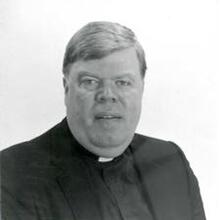A year ago, I was asked by St. Ignatius Parish in Baltimore to deliver an adult-education lecture on “Contemplation in Action.” This is an old Jesuit spiritual theme, presumably contrasting us with strict monastic orders. I started my outline on the examination of conscience and the relationship between life and work, but I became increasingly dissatisfied. As I wrote, my message became simpler: “Staking Out Contemplation.” I spoke about the need to fight for the time for contemplation by finding places within the urban landscape where we can simply be alone with the Spirit. Otherwise, the soul withers and action becomes nothing more than marching through the checklist of the imperious items to be done.
Nature is a perennial space for contemplative wonder. I cherish one in particular. When I was a graduate student at Louvain, I often took a break from my studies and walked through the Forest of Soignes, an immense pine forest on the outskirts of Brussels. Deep within Soignes there is an official Zone de Silence, where it is legally forbidden to speak, play audible music or make other noise. Forest rangers enforce the rule with a fine.
I often wondered about the other people I would meet as I sauntered through the zone. An elderly woman bowed to me as I passed by, carrying my rosary. She held her own rosary up and smiled. Yes, it’s a great prayer—or did we just agree to pray for each other? Another woman was sobbing as she walked down the path. Had her marriage just broken up? Did she just lose her job? A middle-aged man was moving his mouth and fingers as if he were playing a flute. A rehearsal for a concert? Examinations of my own conduct that week flowed naturally in the silent hike, as did visions of the future for myself and for the church. “I shall make all things new.”
Art is another beckoning space. Here in Baltimore I often walk down to the Sculpture Garden of the Baltimore Museum of Art. There is one piece of sculpture in front of which I stand in veneration: “Seventh Decade Forest,” by Louise Nevelson. As I gaze at the black aluminum labyrinth, which seems to burst from the rocky soil toward the heavens, I wonder at Nevelson’s unusual definition of redemption. She claimed she practiced redemption when she picked up stray pieces of wood and metal from the streets of New York, spray-painted them black and then melded them into her sculptural collages. Statuary becomes grace. “And their broken bones I shall knit unto my glory.”
Perhaps the most difficult struggle for contemplative urban space is related to the simple keeping of the Sabbath. In a society that has just surrendered to round-the-clock Thanksgiving shopping, the effort to keep Sunday sacred can appear all but futile. But we surrender at our peril. Sunday is the contemplative space given outright to help us discover who we really are. In the Eucharist, we are unveiled as creature, as redeemed sinner and as future citizen of the New Jerusalem. The dominical walk in the park underlines that our roots are in the earth and that to dust we will return. The dinner with grandparents, aunts, uncles and cousins puts aside all the credentials we so laboriously earned. We are known and loved just because we woke up one day and found ourselves planted in this family and not that one. In the Sabbath peace, silence breaks through the artifice, the status and the endless rankings. “It is not Israel that keeps the Sabbath, it is the Sabbath that keeps Israel.”
To fight for contemplative space is to confront a conspiracy by our society. We are repeatedly reminded that we have one identity: worker and consumer. Our political discourse is reduced to how we split up the material spoils. Neither capitalism nor socialism contests the materialist illusion. We add one screen to another in Plato’s bursting cave; the perpetual image and noise block the glimpse of the creature, let alone the Creator. Contemplative prayer has become the great transgression, but it is only in that transgressive silence that we can finally see the real: God, the earth and ourselves as mysterious gifts, and the personal call quietly given to us by the Spirit to renew the face of the earth. “And after the fire came a low, calm whisper.”








